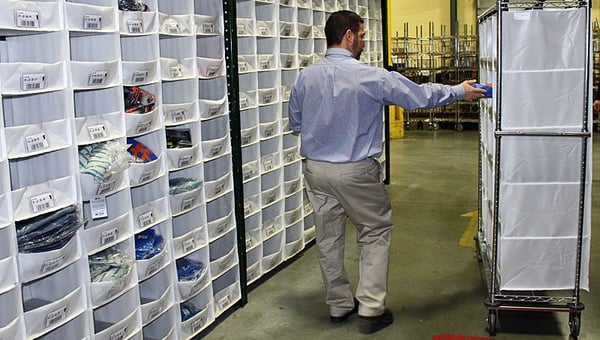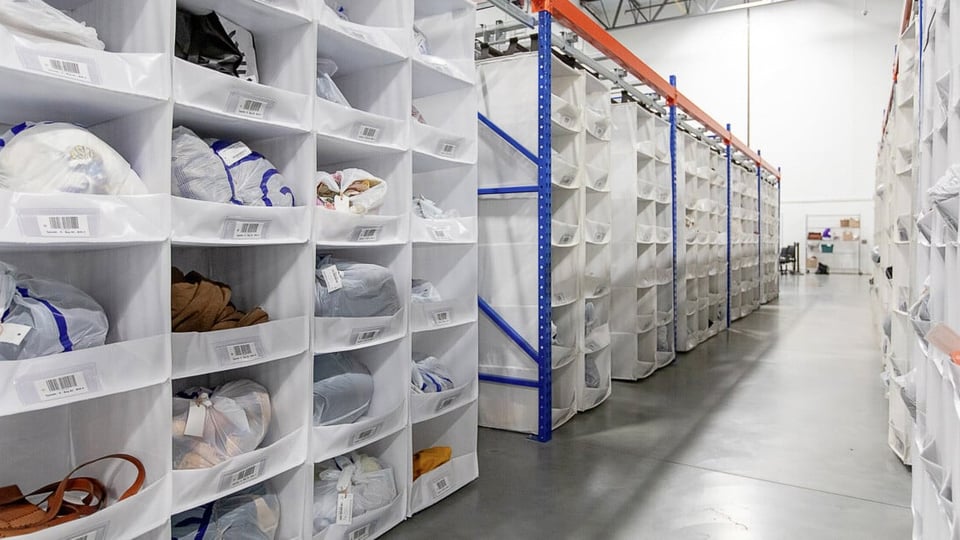E-Commerce Fulfillment: 7 Ways to Build (Capital E) Efficiency
Consumers now have more ways to buy than ever before, a trend that is accelerating at rocket speed through partnerships, acquisitions, software innovations and device upgrades, prompted by demanding customers and lucrative new markets and boosted by the ease of use of new interfaces, currencies and payment options. In a world where Alexa can order your household staples and notify you when your package arrives at your door, why would anyone go to the mall?

In 2016, worldwide retail e-commerce fulfillment sales reached $1.915 trillion dollars; by the end of 2020, it’s projected to reach a whopping $4 trillion, according to EMarketer.com. Meeting the (multi-faceted) challenges of e-commerce sales – handling all these SKUs from all these sources via all these channels to all these destinations – will require a focus on optimization and efficiency that will revolutionize fulfillment.
When so many companies are falling behind, how do you get – and stay – ahead of the game?
Implementing these 7 best practices can help you streamline your supply chain for greater accuracy and efficiency in e-commerce fulfillment:
- Consolidate picks: A sensible cluster-picking strategy with appropriately sized carts allows pickers to handle multiple orders in a single trip, which increases pick rates and reduces travel time.
- Build cohesion across channels: In e-commerce, there’s no room for segregated fulfillment. You must be able to receive, fulfill, ship, and return equally well in and across each of your facilities, from warehouses to retail centers, seamlessly and transparently, to ensure operational accuracy and follow through. Focus on creating cross-channel transparency, communication and competence.
- Keep omni-channel warehouse strategies omnipresent: When designing or renovating your DCs, plan for fluid omni-channel processes with optimum functionality and flexibility to meet demand in every channel.
- Equalize production, fulfillment and labor loads: Integrate supply chain systems to balance workloads, minimize fluctuations for your facilities, equipment and staff, and accommodate seasonality.
- Fine-tune your WMS: Expand existing WMS capabilities to include automation and applications designed to meet the specific challenges of e-commerce fulfillment. Supplement your WMS with a slotting analysis program like SKUBE to ensure every SKU or part you carry is optimized and accounted for.
- Scrutinize seasonality: A close study of seasonal demand patterns often reveals distinct differences by channel. For instance, holiday fulfillment for wholesale orders will increase and peak significantly earlier than for e-commerce orders, allowing you to analyze and optimize seasonal hiring and training.
- Supplement with regional or pop-up DCs: Since 2016, DC operators have been experimenting with the use of smaller, temporary fulfillment facilities to handle the highest volume, fastest-moving SKUs for increased speed and efficiency, especially near large urban hubs.
Realistically, the “traditional” DC has no place in today’s fast-paced, high-demand, customer-centric, omni-channel marketplace. Successful operators recognize this reality – and invest in innovations to meet its challenges with speed and efficiency.
UNEX Manufacturing helps e-commerce operations improve efficiencies and speed of fulfillment with carton flow, pick shelves, gravity conveyors and other material handling systems. UNEX solutions help e-commerce businesses reduce operating costs and keep orders flowing. Contact your UNEX Pickologist today.

